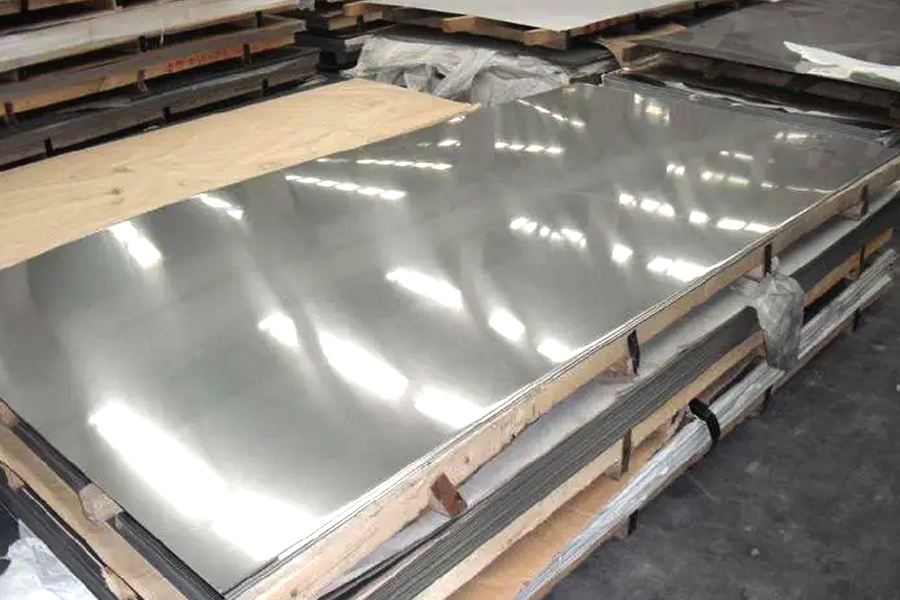In industries that demand high strength, exceptional corrosion resistance, and durability under extreme conditions, material selection is critical. Among the specialized alloys available, Hastelloy alloy sheets have become widely recognized for their outstanding chemical stability, mechanical strength, and versatility. But what exactly is Hastelloy, how does it function as an alloy sheet, and why is it preferred across various industries?
What Is Hastelloy Alloy Sheet?
Hastelloy is a nickel-based superalloy known for its excellent corrosion resistance in harsh chemical environments, including acids, chlorides, and oxidizing conditions. When manufactured into sheets, Hastelloy provides a flat, uniform material that is suitable for forming, welding, and assembly into critical components.
Hastelloy alloy sheets come in various grades, such as C-22, C-276, and B-2, each engineered to withstand specific chemical exposures and temperatures. The sheets are used in applications where reliability, durability, and resistance to aggressive environments are paramount.
Why Is Hastelloy Used in Alloy Sheets?
The use of Hastelloy in sheet form provides multiple benefits:
Corrosion Resistance – Exceptional resistance to oxidizing and reducing agents, including hydrochloric acid, sulfuric acid, and nitric acid.
High Temperature Strength – Maintains mechanical properties at elevated temperatures, ideal for industrial and chemical processes.
Fabrication Flexibility – Can be cut, formed, rolled, and welded to produce components of various shapes and sizes.
Durability – Resistant to pitting, stress corrosion cracking, and crevice corrosion, extending service life.
Chemical Compatibility – Performs well in environments containing chlorine, bromine, and other aggressive chemicals.
These properties make Hastelloy sheets essential in industries that demand safety, precision, and long-term reliability.
How Are Hastelloy Alloy Sheets Manufactured?
The production of Hastelloy sheets involves advanced metallurgical techniques to ensure uniformity, structural integrity, and optimal corrosion resistance:
Melting and Alloying – Nickel, molybdenum, iron, and other elements are melted together under controlled conditions.
Casting – The molten alloy is cast into slabs or billets.
Hot and Cold Rolling – The cast material is rolled into sheets of precise thickness, improving mechanical properties and surface finish.
Annealing – Heat treatment relieves internal stresses and enhances ductility.
Surface Finishing – Sheets are polished or treated for smoothness and uniformity.
Inspection and Testing – Chemical composition, mechanical properties, and surface quality are rigorously tested to ensure conformity to standards.
This meticulous process guarantees that Hastelloy sheets meet stringent industrial and chemical requirements.
What Are the Advantages of Hastelloy Alloy Sheets?
Exceptional Corrosion Resistance – Performs well in acids, chlorides, and oxidizing environments where other alloys fail.
High Mechanical Strength – Maintains structural integrity under mechanical stress and high temperature.
Versatile Fabrication – Suitable for rolling, welding, machining, and forming into complex components.
Extended Lifespan – Resistant to pitting, crevice corrosion, and stress corrosion cracking.
Wide Industrial Application – Can be used in chemical processing, marine, aerospace, and power generation industries.
These advantages make Hastelloy sheets a reliable choice for demanding applications where safety, performance, and longevity are critical.
What Are the Common Applications of Hastelloy Alloy Sheets?
Hastelloy alloy sheets are widely used in industries and processes that involve harsh chemicals or high temperatures:
Chemical Processing Equipment – Reactors, tanks, heat exchangers, and piping systems that handle acids and corrosive agents.
Marine and Offshore Applications – Components exposed to seawater and salt spray, where corrosion resistance is critical.
Power Generation – Turbine blades, boilers, and heat exchangers subjected to high-temperature and corrosive conditions.
Pharmaceutical and Food Processing – Equipment requiring high hygiene standards and resistance to aggressive cleaning agents.
Aerospace and High-Tech Manufacturing – Structural components exposed to extreme temperatures and corrosive environments.
The versatility of Hastelloy sheets ensures reliable performance in challenging operational conditions.
How Does Hastelloy Compare to Other Alloy Sheets?
Versus Stainless Steel – Hastelloy has superior resistance to strong oxidizing and reducing agents compared to stainless steel.
Versus Titanium – While titanium is excellent for some corrosive environments, Hastelloy performs better in certain acid and chloride-rich conditions.
Versus Monel – Hastelloy offers higher strength and better corrosion resistance in aggressive chemical environments.
Choosing Hastelloy ensures optimized durability and resistance where other alloys may fail.
How Are Hastelloy Alloy Sheets Fabricated into Components?
Hastelloy sheets can be processed into complex components using various techniques:
Cutting and Blanking – Precision cutting to create parts for reactors, tanks, and piping.
Forming and Rolling – Shaping sheets into curves, cylinders, or specialized profiles.
Welding and Joining – High-quality welding preserves corrosion resistance and structural integrity.
Surface Treatment – Polishing or passivation enhances resistance to chemicals and improves appearance.
Professional fabrication ensures components maintain both mechanical and chemical performance.
How Do Hastelloy Alloy Sheets Perform Under Extreme Conditions?
Hastelloy sheets are designed to withstand:
High Temperatures – Retain strength and resist oxidation even at elevated temperatures.
Aggressive Chemicals – Resistant to hydrochloric acid, sulfuric acid, nitric acid, and chlorine-containing environments.
Marine Environments – Perform reliably in seawater, salt spray, and other corrosive conditions.
Stress Corrosion – Minimal susceptibility to cracking under mechanical and chemical stress.
These features make Hastelloy sheets essential for environments that would quickly degrade other metals.

What Are the Maintenance Considerations for Hastelloy Components?
Hastelloy components generally require minimal maintenance due to their inherent resistance:
Periodic Cleaning – Remove deposits, dirt, or chemicals that may accumulate on surfaces.
Inspection – Check welds and joints to ensure no mechanical damage or unusual wear.
Surface Care – Maintain smooth finishes to prevent localized corrosion in extreme environments.
Avoid Mechanical Shock – Protect from impacts that could compromise structural integrity.
Proper care ensures longevity and reliable performance of Hastelloy sheets and fabricated components.
Final Thoughts: Why Are Hastelloy Alloy Sheets a Strategic Investment?
Hastelloy alloy sheets provide unmatched corrosion resistance, high-temperature strength, and fabrication versatility, making them indispensable in industries that demand durability, safety, and reliability. From chemical processing and marine applications to aerospace and power generation, Hastelloy sheets offer long-term performance in extreme environments.


 English
English русский
русский عربى
عربى 中文简体
中文简体
